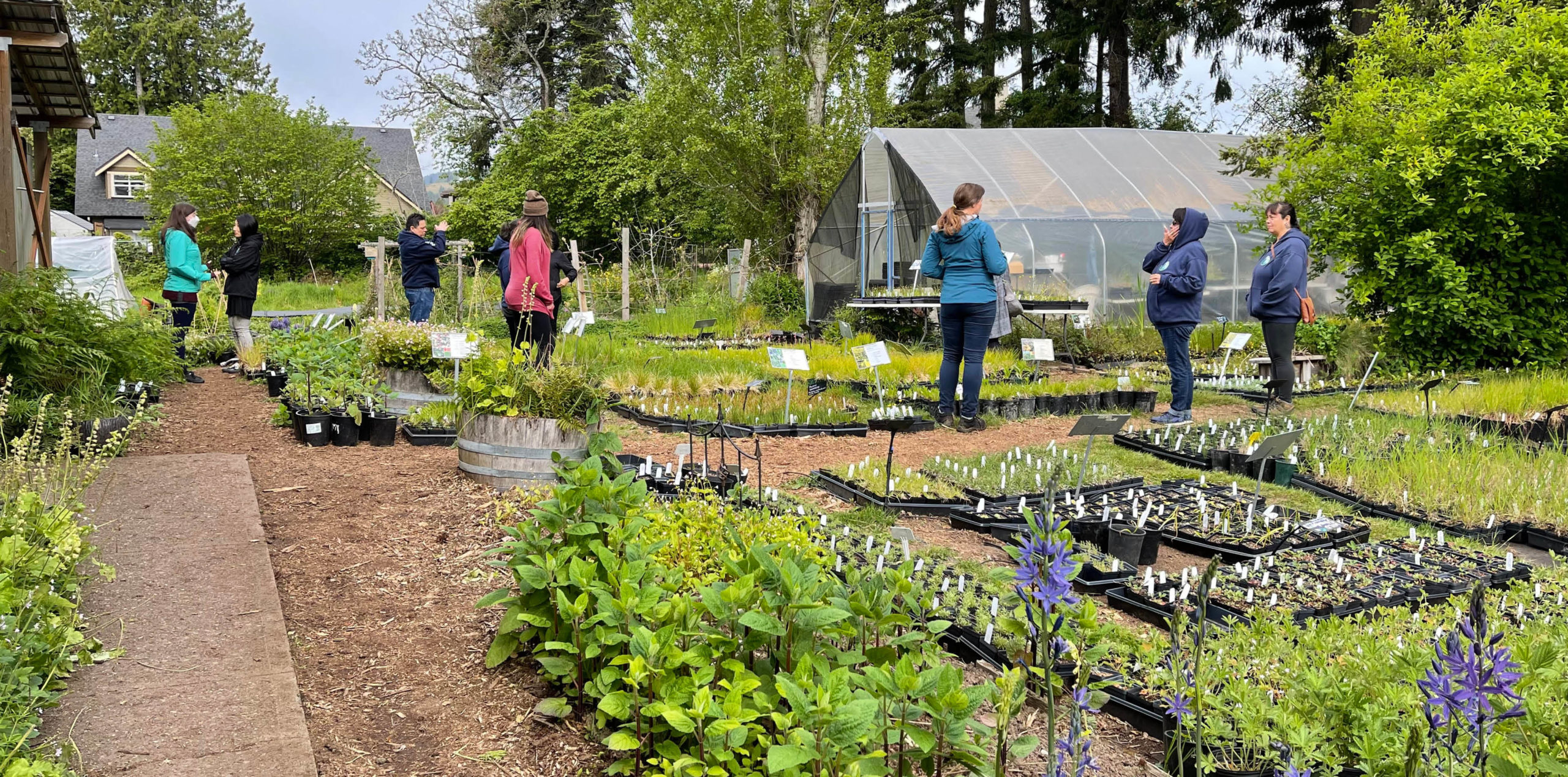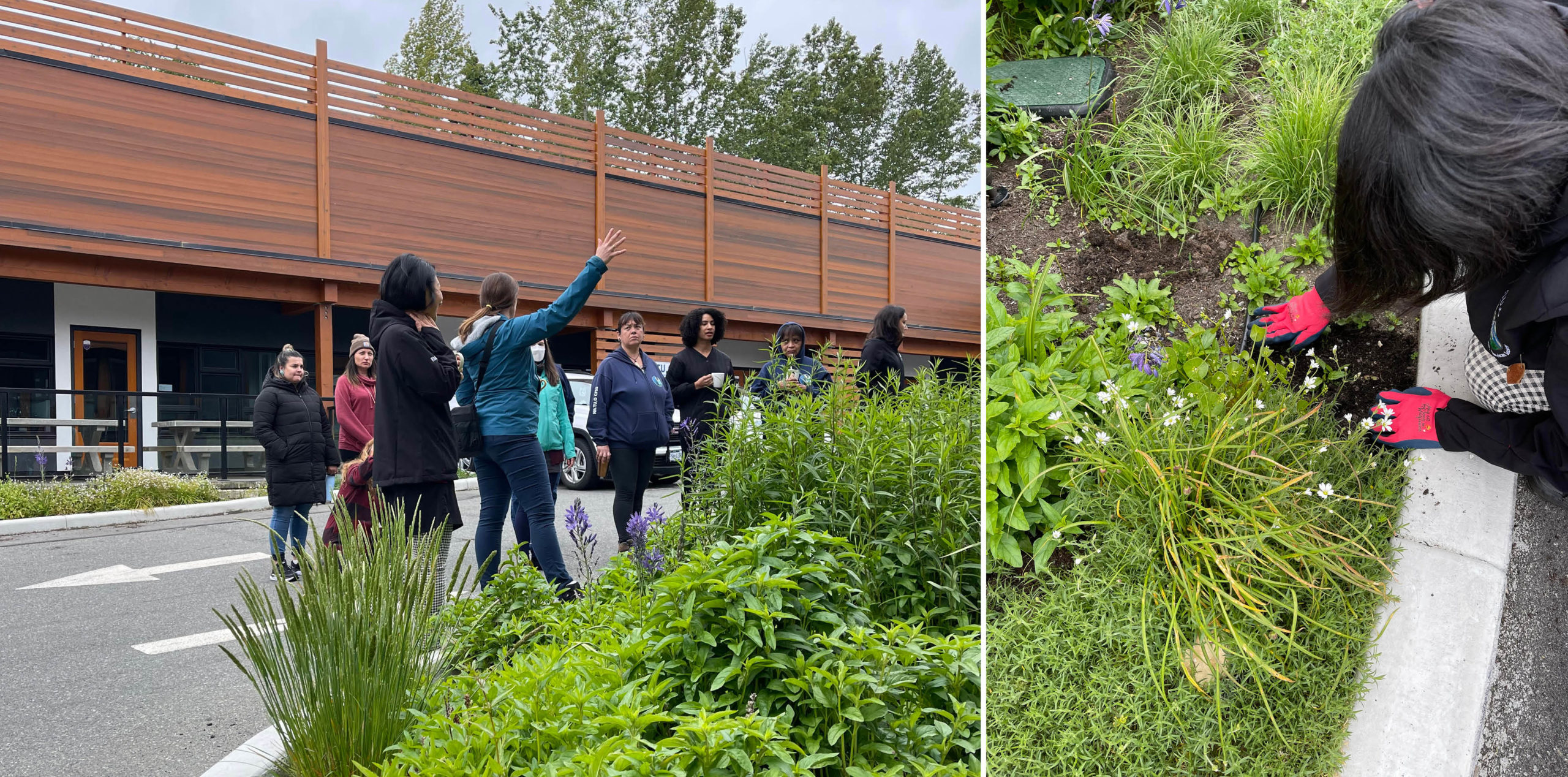by Laurel Anne Stark | photos courtesy NIȽ TU,O Child & Family Services –
The garden beds that surround NIȽ TU,O’s buildings aren’t just beautiful: they’re brimming with native plants integral to Coast Salish culture and ecosystem.
NIȽ TU,O’s commitment to furthering Coast Salish culture and worldview in all areas of operations guided the garden’s design. Planning the gardens took place over the course of several months, where NIȽ TU,O staff and biologist and local native plant expert Kristen Miskelly worked to plan, seed and plant the many garden beds that surround NIȽ TU,O’s buildings and parking lot.
Various themes were chosen for each garden bed, like harvesting, food and medicine gardens, weaving gardens and even a rain garden that mimics a mini-wetland habitat.
These native bushes, plants, trees, grasses and flowers in NIȽ TU,O’s gardens all play an important part in maintaining the integrity of the unique ecology of the Saanich Peninsula. Each plant interacts with its neighbours and together, attracts a diverse array of birds and insects that help maintain the health of the overall system.
Likewise, there is a special relationship between each locally occurring plant and its Coast Salish relatives. Many of these naturally occurring plants, like PEPKIYOS/PEPKÍOŦ (snowberries) and KEXMIN / q̕əx̣mín (wild celery) have medicinal properties accessed through specific cultural protocols. Other plants like SḴEX̱ (nodding onions), miner’s lettuce and coastal mugwort are edible, though mugwort can induce labour and should be treated with caution.
Shares Katharina Stocker, the Executive Director of NIȽ TU,O: “These are so much more than just gardens. In the Coast Salish worldview, we have a sacred connection and responsibility to all living things. These plants aren’t just plants to us: they are our relatives and have been a vital part of their culture since time immemorial.”
Part of the intention of planting these gardens in this way is to help strengthen these bonds between the families and children NIȽ TU,O serves and their plant relatives.
As part of the programming for the children NIȽ TU,O serves, visits to Satinflower Nursery where the seeds of the native plants grow are ongoing. In these outings, children participate in selecting the plants to be used in the gardens, touring the nursery, tasting edible plants, observing the interactions between birds and plants and illustrating their learnings in art projects.
Likewise, engagement between staff members and the plants is encouraged. This past May 24, on an unseasonably chilly spring day, NIȽ TU,O staff also took a tour of Satinflower Nursery, where the plants in NIȽ TU,O’s garden beds started off as seeds, some as long as two years ago.
The staff took a tour of the garden, the seedbeds and the wetlands adjacent to Satinflower Nursery. Next, the staff returned to NIȽ TU,O to visit the garden beds and find out what species are in each bed, what their lifecycle is like, and how they are doing since they have been planted. Then, the staff also planted KEXMIN / q̕əx̣mín (wild celery) in areas that were a bit sparse.
To learn more about NIȽ TU,O please visit www.niltuo.ca.





